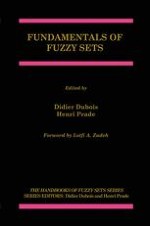2000 | OriginalPaper | Chapter
Possibility Theory, Probability and Fuzzy Sets Misunderstandings, Bridges and Gaps
Misunderstandings, Bridges and Gaps
Authors : Didier Dubois, Hung T. Nguyen, Henri Prade
Published in: Fundamentals of Fuzzy Sets
Publisher: Springer US
Included in: Professional Book Archive
Activate our intelligent search to find suitable subject content or patents.
Select sections of text to find matching patents with Artificial Intelligence. powered by
Select sections of text to find additional relevant content using AI-assisted search. powered by
Possibility theory was coined by L.A. Zadeh in the late seventies as an approach to model flexible restrictions constructed from vague pieces of information, described by means of fuzzy sets. Possibility theory is also a basic non-classical theory of uncertainty, different from but related to probability theory. This chapter discusses the basic elements of the theory: possibility and necessity measures (as well as two other set functions associated with a possibility distribution), the minimal specificity principle which underlies the whole theory, the notions of possibilitic conditioning and possibilistic independence, the combination, and projection of joint possibility distributions, as well as the possibilistic counterparts to integration. The relations and differences between this approach and other uncertainty frameworks, and especially probability theory, are pointed out. The difference between probability theory and fuzzy set theory is thus tentatively clarified. Lastly, decision-theoretic justifications of possibility theory are given.
